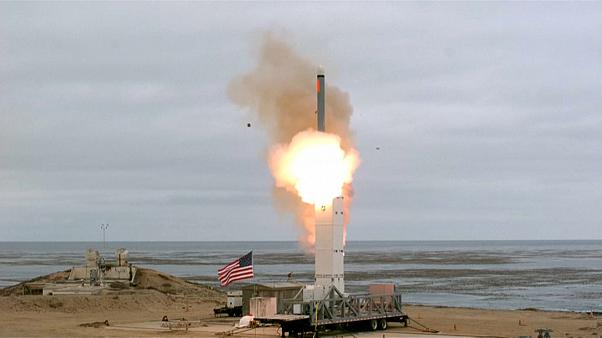The U.S. has conducted the first test of a ground-launched cruise missile since its withdrawal from the Intermediate-Range Nuclear Forces (INF) treaty with Russia earlier this month. On Sunday, the Pentagon flight tested the missile at San Nicolas Island, California.
The test missile “exited its ground mobile launcher and accurately impacted its target after more than 500 kilometers of flight,” the Defense Department said in a statement. The Pentagon said that during the test, it collected data that will inform its development of future intermediate-range missile capabilities.
If the INF Treaty were still in effect, the test would constitute a violation since, as the statement notes, it traveled “more than 500 kilometers.” The U.S. has air- and sea-launched cruise missiles, so, developing a ground launched version was a fairly straightforward process. It’s not clear whether any European nations in range of Russia would agree to deploy the weapon on their territory.
Moscow called the test “regrettable” and said it showed Washington had been getting ready to end the treaty for a long time, the Russian TASS news agency reported Tuesday, according to Reuters.
TASS quoted Russian Deputy Foreign Minister Sergei Ryabkov as saying, “All this elicits regret, the United States has obviously taken the course of escalating military tensions. We will not succumb to provocations. We won’t allow ourselves to be pulled into a costly arms race.”
Beijing also weighed in, Agence France-Presse reported. “This measure from the US will trigger a new round of an arms race, leading to an escalation of military confrontation, which will have a serious negative impact on the international and regional security situation,” AFP quoted Chinese foreign ministry spokesman Geng Shuang as saying.
He added that the U.S. ought to “let go of its Cold War mentality” and “do more things that are conducive to … international and regional peace and tranquility.”
The 1987 treaty, signed by Presidents Ronald Reagan and Mikhail Gorbachev, had required the destruction of of a particular class of weapons, banning medium-range, ground-based missiles capable of carrying nuclear arms, with a range of 310 to 3,400 miles. After it was signed, the U.S. and Russia dismantled more than 2,600 missiles.
The U.S., in withdrawing from the agreement, accused Russia of violating the accord, pointing to a finding that Russia has been producing and fielding multiple battalions of the Novator 9M729 ground-launched cruise missile, placing some in western Russia, in striking distance of European targets. Its estimated range is just under 2,600 kilometers.
After the U.S. announced its withdrawal from the treaty, Defense Secretary Mark Esper said he wanted to deploy an intermediate-range conventional missile in the Pacific region, preferably within a matter of “months,” though he thinks it will take some time to develop the more advanced land-based missile capabilities.
Some Pentagon estimates say that a low-flying cruise missile with a potential range of about 1,000 kilometers (620 miles) could be ready for deployment in 18 months. A ballistic missile with a range of roughly 3,000 to 4,000 kilometers (1,860 to 2,490 miles) could take five years or more to deploy. Neither would be nuclear armed.








































admin in: How the Muslim Brotherhood betrayed Saudi Arabia?
Great article with insight ...
https://www.viagrapascherfr.com/achat-sildenafil-pfizer-tarif/ in: Cross-region cooperation between anti-terrorism agencies needed
Hello there, just became aware of your blog through Google, and found ...